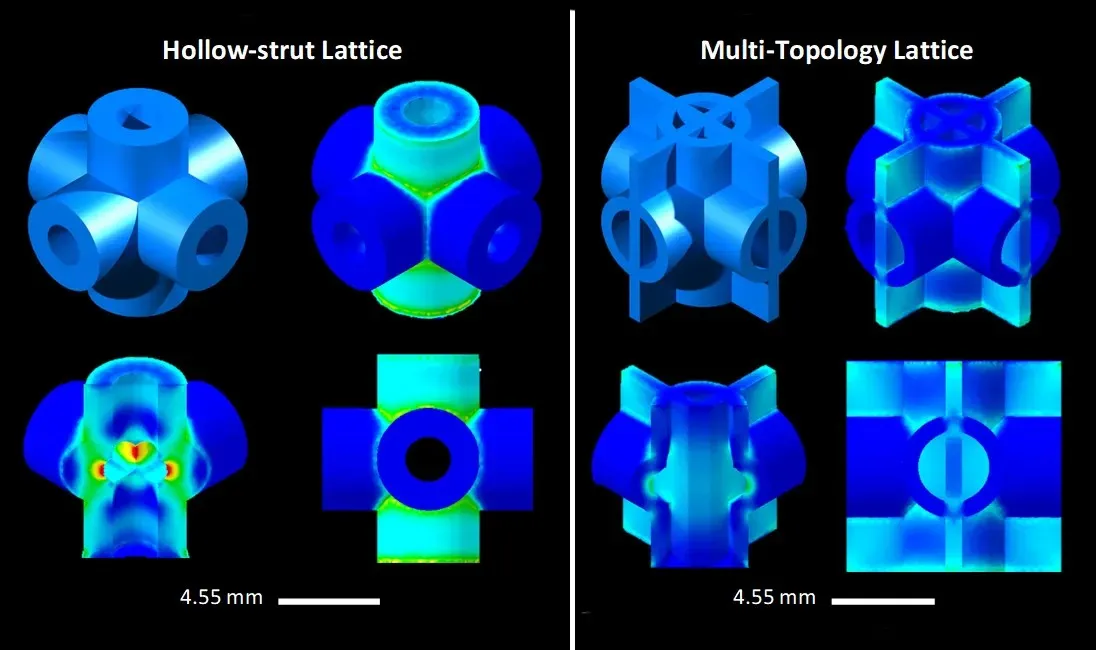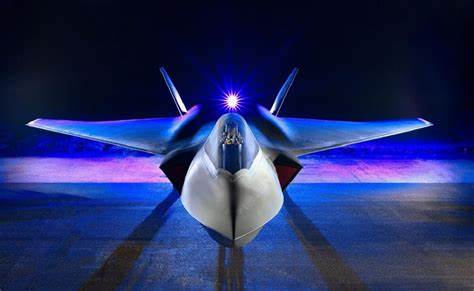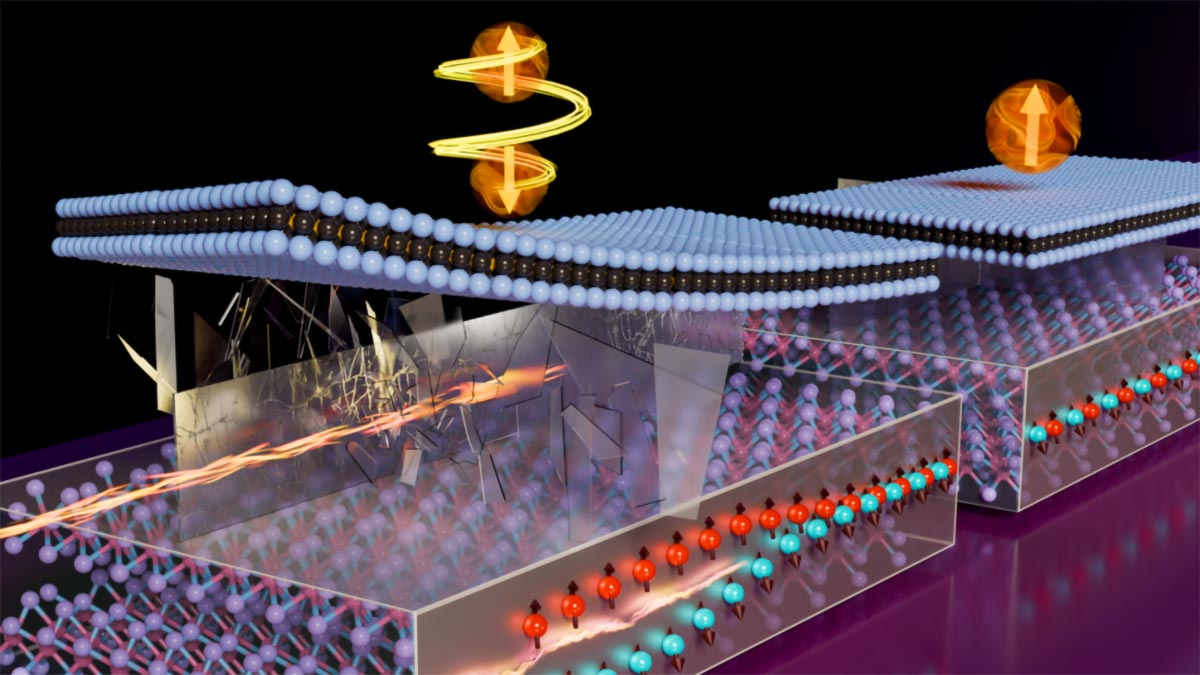The new aircraft requires new materials.
The new 3D-printed metamaterials can make a revolution in all kinds of technology. The lightweight and very strong metamaterial can be useful in the next-generation armor. Those metamaterials are as strong as diamonds but easier to create using 3D printer technology. And that can bring a new era for material research. The space in that material is the thing that makes it so strong.
And that thing can be one version of the next-generation stealth materials. The 3D metamaterial that is made by using fibers can scatter and pull the radar radiation into itself. That metamaterial can put the radiation jump between those wires.
 |
"Areas where stress concentrated in a previous design (left) can be seen in red and yellow. In the new structure (right), stress is more evenly distributed. (Credit: RMIT, 3D-printed “metamaterial” is stronger than anything in nature)"
"Researchers have discovered that objects can achieve directed motion within a liquid crystal by periodically changing their sizes, potentially paving the way for advancements in micro-robotics." (ScitechDaily, A Groundbreaking New Principle – Korean Researchers Uncover Revolutionary Phenomenon in Liquid Crystals)
And that can make this thing invisible to the radar. The metamaterials can also put photons jump between those wires. And that pulls energy out from those light waves. If the system can conduct those energy waves in a certain direction, that can make the structure invisible to the human eye.
The AI that operates liquid crystals can make the ultimate surface for crafts. It can operate multiple small intelligent structures that can transform its shape. That shape along with intelligent jamming technology can make the stealth structure. That is very hard to hack.
The idea is that those wires or nanotubes form the electromagnetic wormhole. The idea is that the photons or radio waves can slip into those nanotubes. And other photons. That travel in that tube puts them to travel into the wanted direction.
"The flow of electrical current in the bottom crystalline slab (representing WTe2) breaks a mirror symmetry (shattered glass), while the material itself breaks the other mirror symmetry (cracked glass). The resulting spin current has vertical polarization that switches the magnetic state of the top 2D ferromagnet. Credit: Image courtesy of the researchers. (ScitechDaily, MIT Unlocks the Power of 2D Magnets for Future Computing)
The new intelligent liquid crystal technology makes it possible for researchers to make the ultimate acoustic systems. The oscillation of those liquid crystals makes it possible to create acoustic bubbles. The acoustic systems that create high-pressure energy impulses can used to create acoustic protective fields. Those protective fields are the pressure impulses that should turn incoming ammunition's direction, or make dama
The 2D microchip technology, connected with the optical liquid crystals can make this kind of new stealth materials possible. The idea is that the craft's surface is created using a graphene network. The microchip-controlled crystals can cover the entire surface. The microchip technology makes it possible. That there are small pyramids on the outer layer of the aircraft.
The intelligent system can change those pyramid's height and width. The system can pull them into sight form when the craft travels fast. And in slow flight, the size of those pyramids will turn higher.
https://www.19fortyfive.com/2022/12/forget-the-f-35-a-sixth-generation-fighter-jet-is-coming-from-japan-and-europe/
https://bigthink.com/the-future/3d-printed-metamaterial/
https://scitechdaily.com/a-groundbreaking-new-principle-korean-researchers-uncover-revolutionary-phenomenon-in-liquid-crystals/
https://scitechdaily.com/mit-unlocks-the-power-of-2d-magnets-for-future-computing/








No comments:
Post a Comment
Note: Only a member of this blog may post a comment.